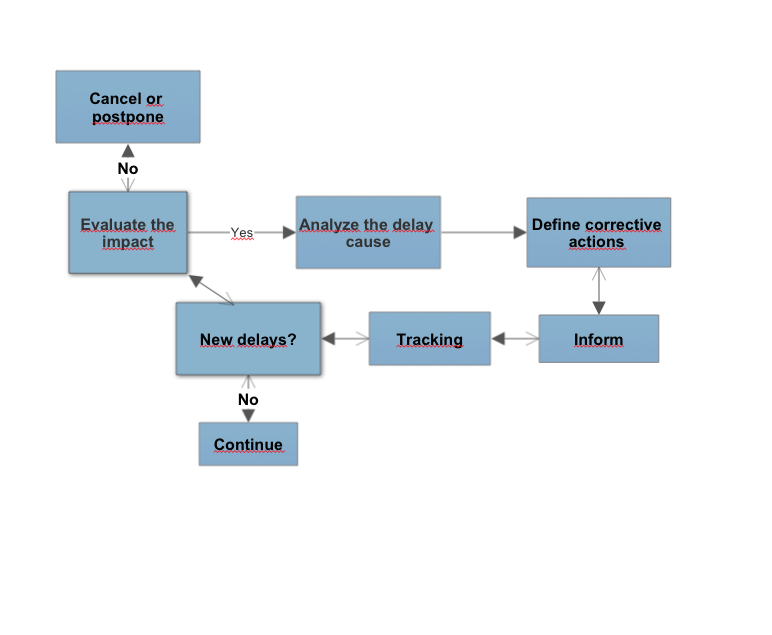Using flexible methods to manage your projects can vastly improve your own productivity and that of your company. Which is the best and how do you choose the right one for your needs and your development model?
When embarking on the management of a project, the main difficulty for both those in charge of organizing and distributing tasks and those responsible for completing them is successfully setting specific targets and organizing those targets according to previously establish priorities and delivery deadlines.
The traditional approach consisted of tackling the whole project as if it were a single task, preparing one single and rigid action plan that could not easily be modified in response to the various contingencies that might arise. This leads to numerous logistical and organizational problems. Firstly, a business project cannot be carried out by a single person or a very small group. Furthermore, the business environment, the needs of customers and the economic context, etc. are all in a constant state of flux. Effective and flexible project management should be capable of adapting itself to all these eventualities and should be based on the principle of ongoing improvement.
To be more effective, it is highly useful to divide a large project into smaller tasks that are more manageable, assigning each one to a small group of individuals, establishing short delivery deadlines and applying constant supervision to ensure that targets and actions are adapted to the needs and circumstances at any given moment.
This is the goal of Scrum. A business project is divided into task blocks that can be completed by small groups of individuals with an estimated duration of approximately two weeks, with controls during the course of the task and at the end of the allotted time period.

However, is it possible to be even more efficient?
This is where the Kanban method comes into play. This method consists of breaking up the project still further, dividing it into the smallest and most simple tasks possible and distributing those tasks on a colorful board based on an order of preference.
In this case, tasks can be completed by a single individual in periods as short as a few hours. This not only enables immediate adaptation to changing circumstances but also manages to improve the impressions felt by employees. Far from feeling overwhelmed by an enormous project that might seem unachievable, they are busy on the completion of small tasks and therefore constantly feel the satisfaction of achieving a goal when delivering a result.
This is why the visual distribution of tasks is so important. A Kanban board comprises three columns. One column contains the tasks pending completion, another contains the tasks being carried out at the moment and the third column contains the completed tasks. The satisfaction of moving tasks from one column to another provides a small dose of optimism that can make a huge difference at the end of a working day. Furthermore, the visual representation of tasks provides an immediate overview of which remain outstanding and their order of priority.
In turn, project managers can immediately know the status of each task and steer work by employees towards those goals that require more attention, present the most complex difficulties or need to be completed as a priority.
If you want your company to become a leader in its sector, it is essential to support your ideas with the best project management system. At ITM Platform, we strive to offer a comprehensive, online and easy-to-use application to maximize the simplification of management at your company and make it as efficient as possible.
ITM Platform is an online application for the management of projects, portfolios, programs and services that guarantees alignment with your business objectives.
Furthermore, it facilitates communication and collaboration between team members in a secure, simple and intuitive manner by offering a scalable platform that combines Kanban and predictive models (based on Gantt) in an integrated fashion, in a single portfolio.
What are you waiting for? Try it now!

 Projects in the field of development are ultimately aimed at obtaining specific results to enable the promotion of socio-economic development in a community, region or country.
Projects in the field of development are ultimately aimed at obtaining specific results to enable the promotion of socio-economic development in a community, region or country.
 Among the skills that any human resources manager should focus on when contracting a professional project manager, communication, organization and experience stand head and shoulders above the rest.
Among the skills that any human resources manager should focus on when contracting a professional project manager, communication, organization and experience stand head and shoulders above the rest. It is the period or method of periodically monitoring assets in which the products and services of a company are counted at regular intervals (for example, at the end of each month).
It is the period or method of periodically monitoring assets in which the products and services of a company are counted at regular intervals (for example, at the end of each month). From the moment we gain the ability to reason, all of us start to imagine, plan, get excited about and launch new ideas and projects. These range from long-term life projects to short-term weekend projects. They might be solo projects or projects in which we involve a colleague or an entire community.
From the moment we gain the ability to reason, all of us start to imagine, plan, get excited about and launch new ideas and projects. These range from long-term life projects to short-term weekend projects. They might be solo projects or projects in which we involve a colleague or an entire community.